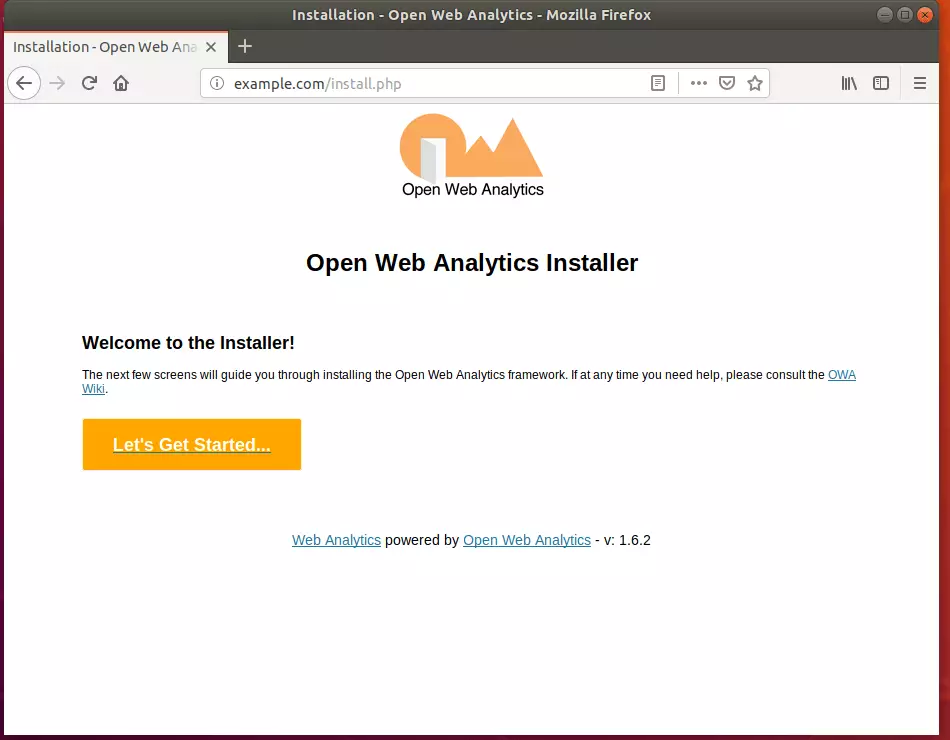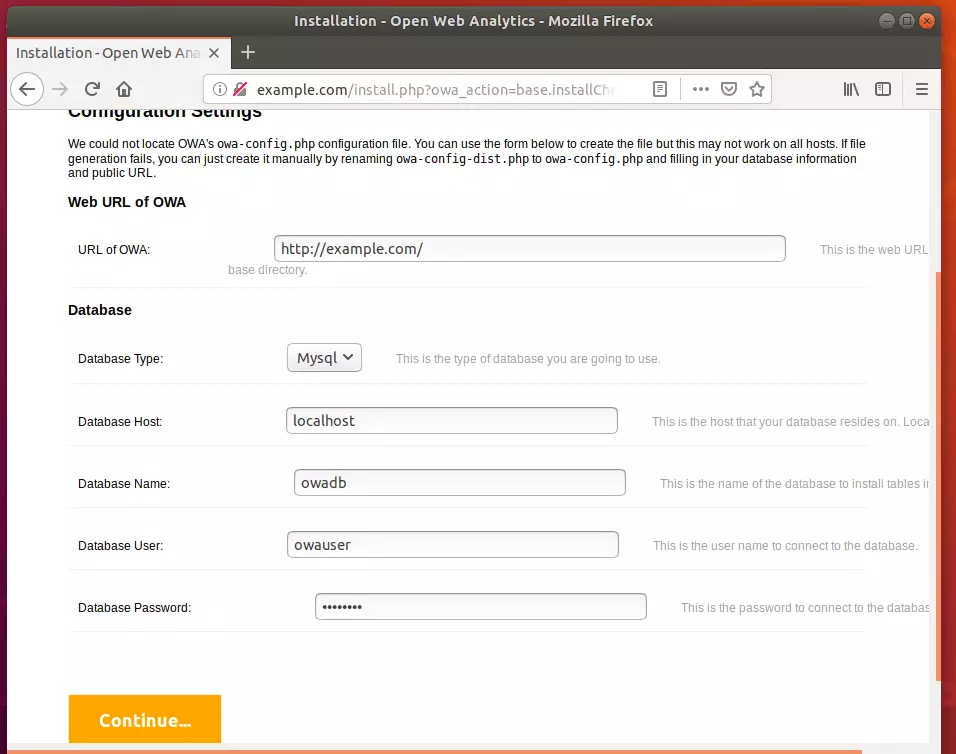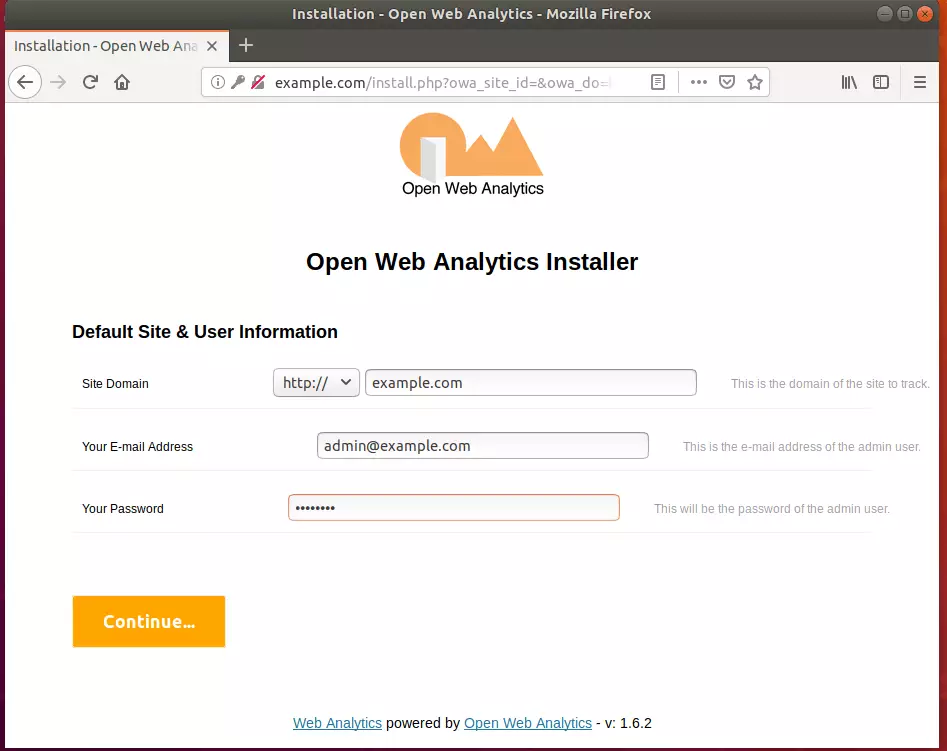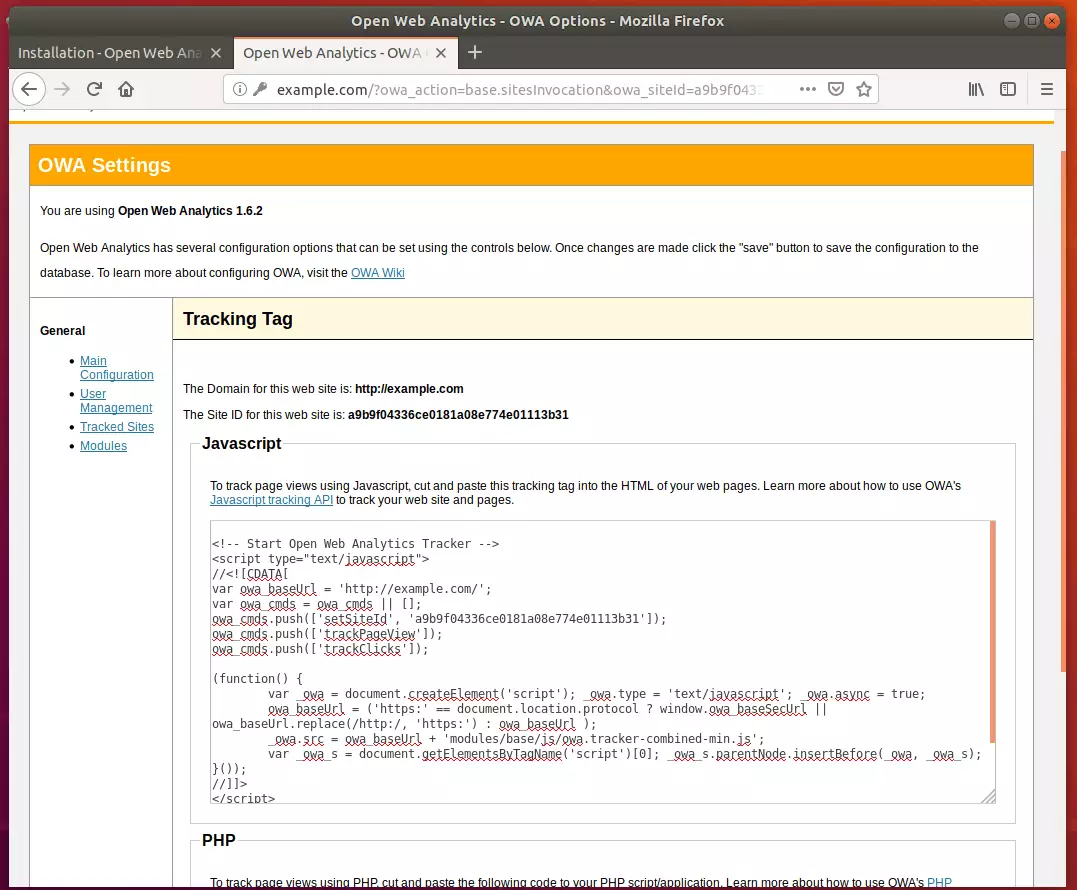This article explains installing Open web analytics with Nginx support on Ubuntu Linux.
Open Web Analytics (OWA) is an open-source platform built with PHP that you can use to track and analyze how people use your websites and applications.
Setting up Open Web Analytics with Nginx on Ubuntu Linux provides a great way to track and analyze how people use your websites and applications without relying on third-party solutions like Google Analytics.
With OWA, you can take full control of your website analytics and data and get insights into how your web pages perform. Nginx is a popular web server with high performance and scalability, making it a great choice for hosting OWA.
Additionally, Ubuntu Linux provides a stable and reliable platform for hosting web applications and is widely used by web developers and administrators.
For more on OWA, please visit its home page
Install Nginx HTTP Server
Nginx HTTP Server is probably the most popular web server in use today. Install it since OWA needs it. For example, run the commands below to install Nginx HTTP on the Ubuntu server.
sudo apt update sudo apt install nginx
After installing Nginx, the commands below can be used to stop, start, and enable the Nginx service to always start up with the server boots.
sudo systemctl stop nginx.service sudo systemctl start nginx.service sudo systemctl enable nginx.service
To test whether Nginx is installed, open your browser and browse to the server hostname or IP address. When you see that, then Nginx is working as expected.
http://localhost

Install MariaDB Database Server
MariaDB database server is a great place to start when looking at open-source database servers to use with OWA. To install MariaDB, run the commands below.
sudo apt-get install mariadb-server mariadb-client
After installing MariaDB, the commands below can stop, start, and enable the service to start when the server boots.
Run these on Ubuntu 16.04 LTS
sudo systemctl stop mysql.service sudo systemctl start mysql.service sudo systemctl enable mysql.service
Run these on Ubuntu 17.10 and 18.04 LTS
sudo systemctl stop mariadb.service sudo systemctl start mariadb.service sudo systemctl enable mariadb.service
After that, run the commands below to secure the MariaDB server by creating a root password and disallowing remote root access.
sudo mysql_secure_installation
When prompted, answer the questions below by following the guide.
- Enter current password for root (enter for none): Just press the Enter
- Set root password? [Y/n]: Y
- New password: Enter password
- Re-enter new password: Repeat password
- Remove anonymous users? [Y/n]: Y
- Disallow root login remotely? [Y/n]: Y
- Remove test database and access to it? [Y/n]: Y
- Reload privilege tables now? [Y/n]: Y
Restart MariaDB server
Type the commands below to log on to the MariaDB server to test if MariaDB is installed.
sudo mysql -u root -p
Then, type the password you created above to sign on. If successful, you should see a MariaDB welcome message.

Install PHP 7.2-FPM and Related Modules
PHP 7.2-FPM may not be available in Ubuntu default repositories. To install it, you will have to get it from third-party repositories.
Run the commands below to add the below third party repository to upgrade to PHP 7.2-FPM
sudo apt-get install software-properties-common sudo add-apt-repository ppa:ondrej/php
Then update and upgrade to PHP 7.2-FPM
sudo apt update
Next, run the commands below to install PHP 7.2-FPM and related modules.
sudo apt install php7.2-fpm php7.2-common php7.2-curl php7.2-mbstring php7.2-xmlrpc php7.2-mysql php7.2-gd php7.2-xml php7.2-cli
After installing PHP 7.2, run the commands below to open Nginx’s PHP default config file.
sudo nano /etc/php/7.2/fpm/php.ini
Then, save the changes on the following lines below in the file. The value below is an ideal setting to apply in your environment.
file_uploads = On allow_url_fopen = On short_open_tag = On memory_limit = 256M cgi.fix_pathinfo = 0 upload_max_filesize = 100M max_execution_time = 360 date.timezone = America/Chicago
After making the change above, save the file and closet.
After installing PHP and related modules, you must restart Nginx to reload PHP configurations.
To restart Nginx, run the commands below
sudo systemctl restart nginx.service
Create OWA Database
Once you’ve installed all the packages required for OWA to function, continue below to start configuring the servers. First, run the commands below to create a blank OWA database.
To log on to the MariaDB database server, run the commands below.
sudo mysql -u root -p
Then, create a database called owadb.
CREATE DATABASE owadb;
Create a database user called owauser with a new password
CREATE USER 'owauser'@'localhost' IDENTIFIED BY 'new_password_here';
Then, grant the user full access to the database.
GRANT ALL ON owadb.* TO 'owauser'@'localhost' IDENTIFIED BY 'user_password_here' WITH GRANT OPTION;
Finally, save your changes and exit.
FLUSH PRIVILEGES; EXIT;
Download and Install OWA
Run the commands below to download OWA’s latest content. At the time of this post, the latest version is 1.6.2.
cd /tmp wget https://github.com/padams/Open-Web-Analytics/archive/1.6.2.zip unzip 1.6.2.zip sudo mv Open-Web-Analytics-1.6.2 /var/www/html/owa
Next, run the commands below to change the root folder permissions.
sudo chown -R www-data:www-data /var/www/html/owa/ sudo chmod -R 755 /var/www/html/owa/
Configure Nginx OWA Site
Finally, configure the Nginx configuration file for OWA. This file will control how users access OWA content. Run the commands below to create a new configuration file called owa
sudo nano /etc/nginx/sites-available/owa
Then copy and paste the content below into the file and save it. Replace the highlighted line with your domain name and directory root location.
server {
listen 80;
listen [::]:80;
root /var/www/html/owa;
index index.php index.html index.htm;
server_name example.com www.example.com;
client_max_body_size 100M;
location / {
try_files $uri $uri/ /index.php?q=$uri&$args;
}
location ~ \.php$ {
include snippets/fastcgi-php.conf;
fastcgi_pass unix:/var/run/php/php7.2-fpm.sock;
fastcgi_param SCRIPT_FILENAME $document_root$fastcgi_script_name;
include fastcgi_params;
}
}
Save the file and exit.
After configuring the VirtualHost above, please enable it by running the commands below.
Enable the OWA Site and Rewrite Module
After configuring the VirtualHost above, please enable it by running the commands below, then restart the Nginx server.
sudo ln -s /etc/nginx/sites-available/owa /etc/nginx/sites-enabled/ sudo systemctl restart nginx.service
Next, open your browser, go to the URL, and continue with the installation.
http://example.com/
Let’s Get Started. to begin the installation wizard.

On the next page, type in the database connection info and create an administrator account to manage the platform in the back end. and continue

After entering the info above, click Next to create a superuser account to manage the platform.

You’ll then be given the tracking code to add to the website you want to track.

To track your web traffic with OWA, you must ensure extra code is added to each web page.
In most websites, blogs, CMS, etc., you can use a pre-made plugin to do the technical work. However, if no plugin exists, you can edit your website templates and add this code to the </head> tag, often defined in a ‘header.php,’ ‘header.tpl’, or a similar template file.
JavaScript Tracking Code
Make sure this code is on every page of your website. We recommend pasting it immediately before the closing </head> tag.
You’ll find the private website configuration system at http://example.com/index.php.
Enjoy!
You may also like the post below:

Leave a Reply Cancel reply